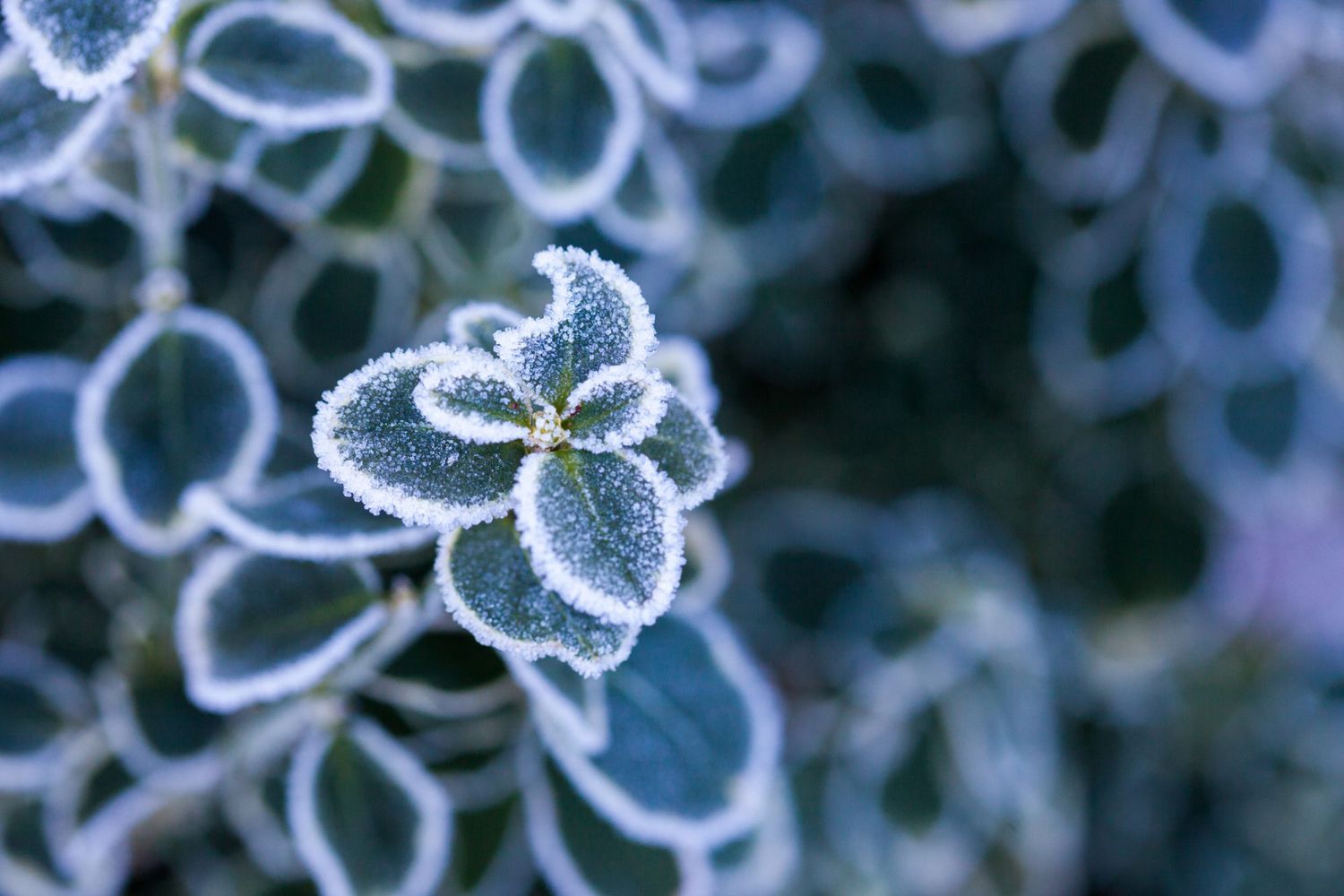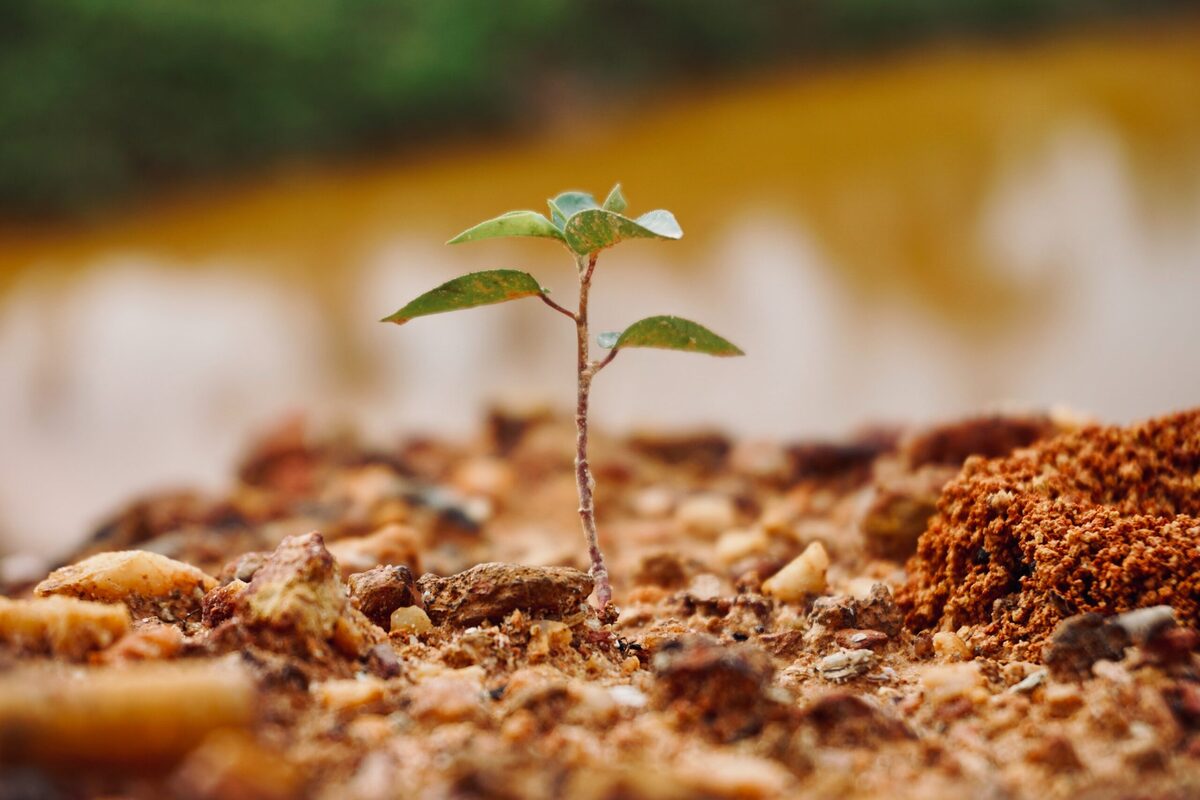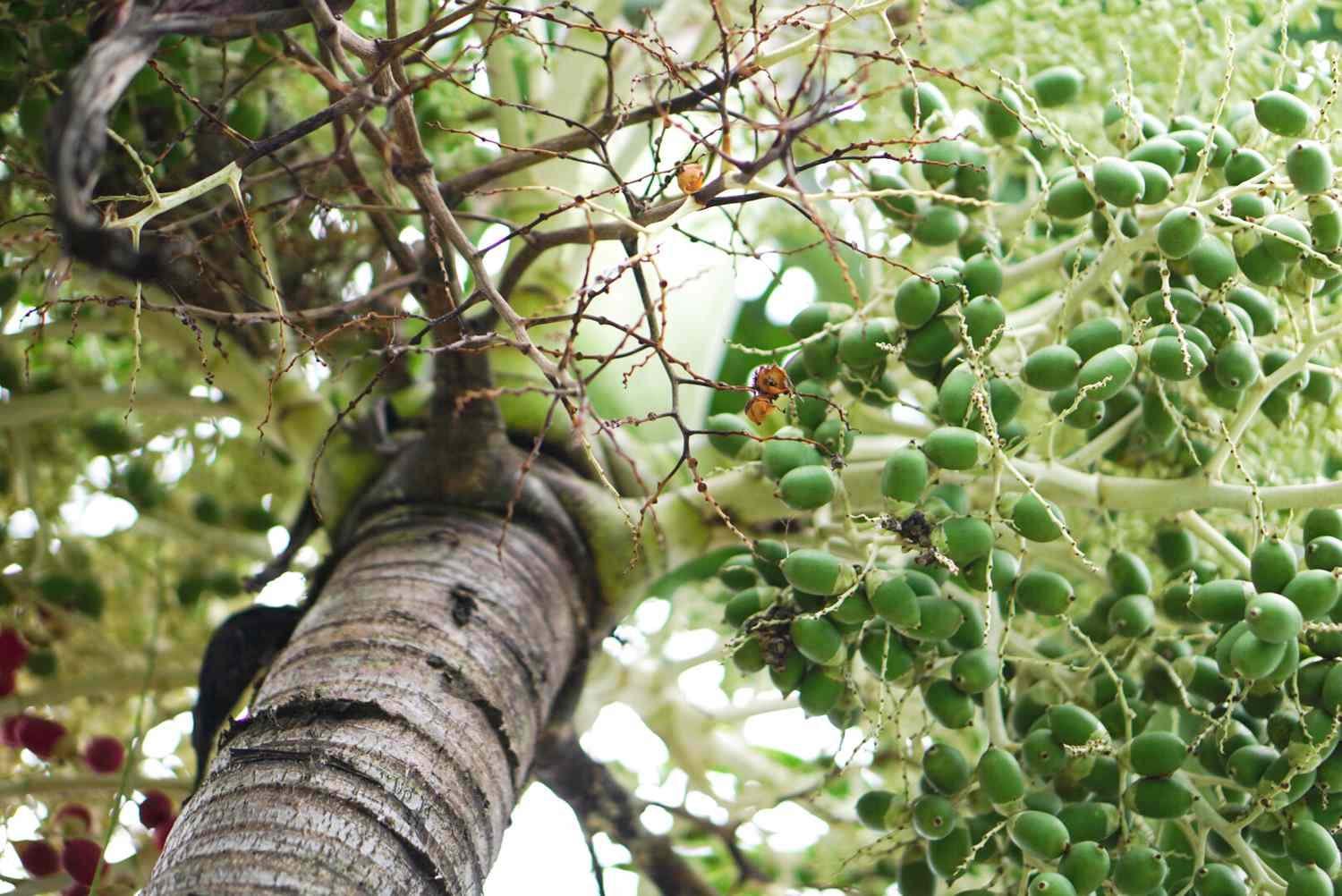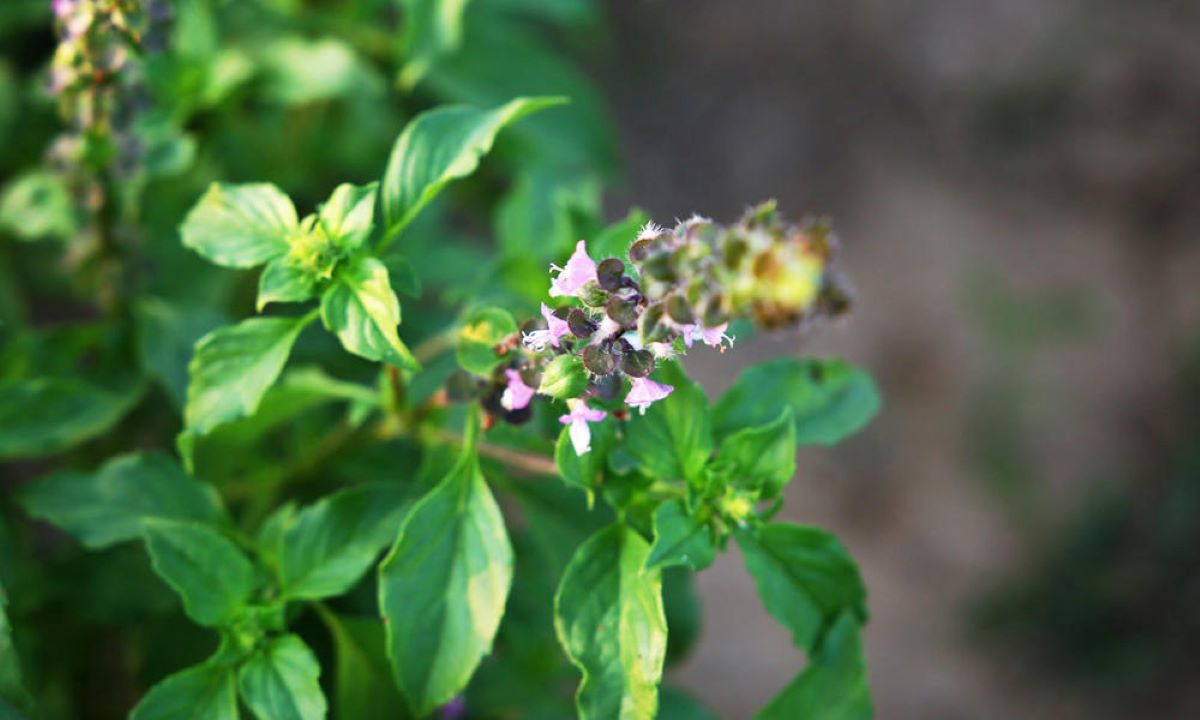Home>Gardening Tips and Tricks>Eco-Friendly Gardening>How To Protect Large Trees From Frost
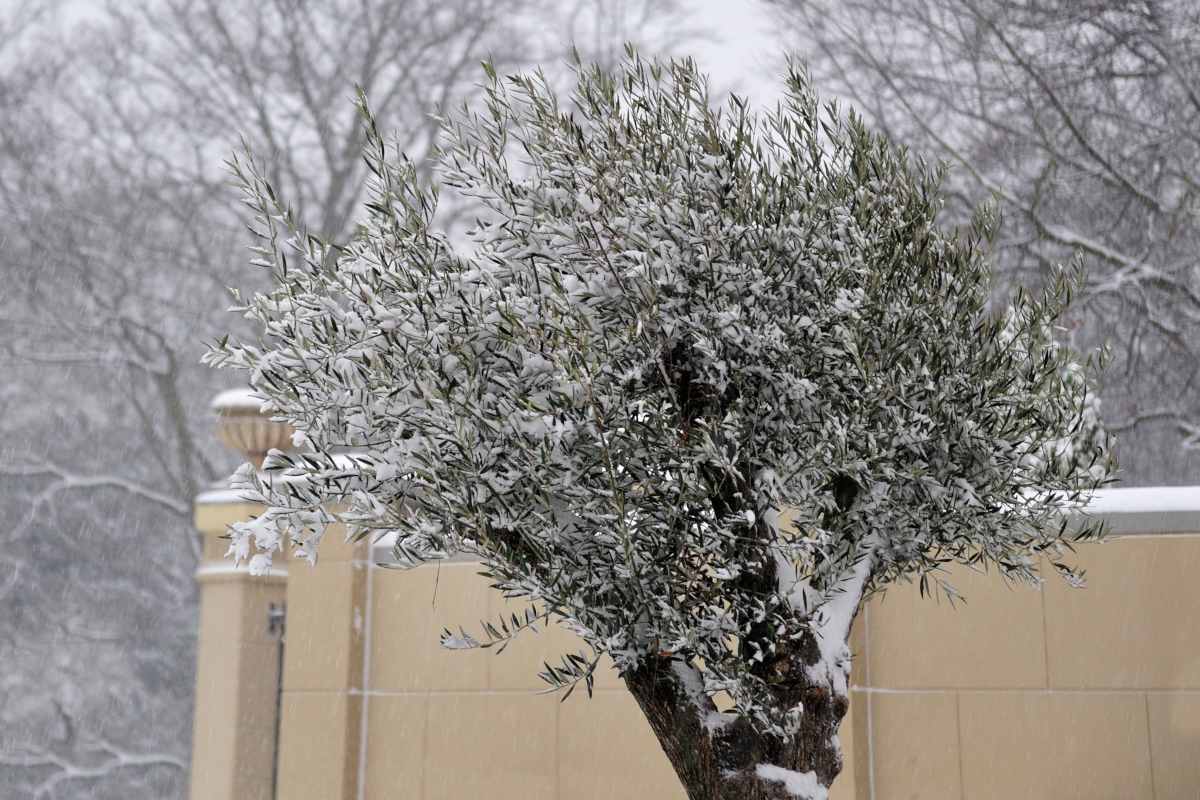

Eco-Friendly Gardening
How To Protect Large Trees From Frost
Modified: January 22, 2024
Protect your large trees from frost with eco-friendly gardening techniques. Learn how to safeguard your trees and nurture a healthy, sustainable garden.
(Many of the links in this article redirect to a specific reviewed product. Your purchase of these products through affiliate links helps to generate commission for Chicagolandgardening.com, at no extra cost. Learn more)
Table of Contents
- Introduction
- Understanding Frost and its Effects on Trees
- Why Protect Large Trees from Frost
- When to Protect Large Trees from Frost
- Assessing the Frost Risk for Your Trees
- Preparing and Planning for Frost Protection
- Methods and Techniques for Protecting Large Trees from Frost
- Wrapping Trees with Frost Protection Material
- Using Frost Blankets or Covers for Trees
- Using Heat Sources to Protect Large Trees from Frost
- Other Tips and Considerations for Frost Protection
- Conclusion
Introduction
Welcome to the world of eco-friendly gardening! If you are passionate about nurturing a garden that supports the health of our planet, you have come to the right place. In today’s article, we will explore the fascinating topic of eco-friendly gardening and how you can create a sustainable and environmentally-conscious garden space.
Eco-friendly gardening, also known as sustainable gardening, is a practice that focuses on cultivating plants and maintaining landscapes in a way that minimizes harm to the environment. This approach promotes biodiversity, conserves resources, reduces pollution, and supports the overall health of our ecosystems.
Now more than ever, it is crucial for us to prioritize eco-friendly practices in our gardens. As we face the challenges of climate change and the decline of biodiversity, our green spaces have the potential to play a significant role in mitigating these issues. By adopting eco-friendly gardening methods, we can actively contribute to the well-being of our planet.
In this article, we will explore various aspects of eco-friendly gardening, including organic gardening techniques, water conservation strategies, companion planting, composting, and more. We will delve into the principles and benefits of each of these practices, providing you with practical tips and ideas to implement them in your own garden.
Whether you are an experienced gardener looking to transition to more sustainable practices or a beginner eager to learn more about eco-friendly gardening, this article has something for everyone. Join us as we embark on a journey towards creating beautiful and environmentally-friendly gardens that will thrive for generations to come.
Understanding Frost and its Effects on Trees
Frost can pose a significant threat to trees, particularly during the colder months. Understanding the effects of frost on trees is essential for protecting their health and ensuring their survival.
Frost occurs when temperatures drop below freezing point, causing ice crystals to form on the surface of plants and trees. These ice crystals can damage the plant’s tissues, leading to various detrimental effects.
One of the most common effects of frost on trees is cell damage. When ice crystals form, they can penetrate the plant’s cells, causing them to rupture. This cell damage can interfere with the tree’s ability to transport water and nutrients, leading to wilting, leaf drop, and even death in severe cases.
In addition to direct cell damage, frost can also affect the tree’s vascular system. When exposed to frost, the tree’s sap can freeze, leading to the formation of ice within its xylem and phloem. This can disrupt the flow of water and nutrients, further impacting the tree’s overall health and vitality.
Frost can also cause damage to the tree’s buds and shoots. The tender growth of young trees is particularly susceptible to frost damage. The freezing temperatures can kill the buds, stunting the tree’s growth and preventing the formation of new leaves and branches.
Furthermore, frost can lead to bark splitting or cracking in certain tree species. When the temperature drops rapidly, the outer bark layer contracts more quickly than the inner layer, causing stress on the trunk. This stress can result in the formation of cracks, leaving the tree vulnerable to disease and pests.
To mitigate the effects of frost on trees, it is crucial to understand the different factors that can influence its severity. These factors include the duration and intensity of freezing temperatures, the tree’s age and health, its location within the landscape, and the presence of protective elements such as windbreaks or microclimates.
By being aware of the effects of frost on trees and taking appropriate measures to protect them, you can ensure the health and longevity of your beautiful garden. In the following sections, we will discuss why it is important to protect large trees from frost and when and how to implement effective frost protection techniques. So let’s dive in and learn how to safeguard our beloved trees from this chilly threat!
Why Protect Large Trees from Frost
Large trees are not only majestic features in our landscapes but also play vital roles in our ecosystem. They provide shade, reduce urban heat island effect, improve air quality, and support a diverse range of wildlife. Protecting these valuable assets from frost is essential for maintaining their health and preserving the benefits they bring to our environment.
One of the primary reasons to protect large trees from frost is to prevent damage to their delicate tissues. As we discussed earlier, frost can cause cell damage, sap freezing, and bud and shoot damage. These effects can weaken the trees and make them more susceptible to disease, pest infestations, and overall decline in health.
Additionally, large trees often take years, if not decades, to reach their full maturity. They have extensive root systems, strong trunks, and well-established canopies that make them resilient. Losing a mature tree to frost damage can be a significant setback in terms of both aesthetic value and ecological impact.
Furthermore, large trees provide vital ecosystem services, such as sequestering carbon dioxide, reducing air pollution, and regulating temperatures. By protecting them from frost damage, we ensure that they can continue to perform these important functions, contributing to the overall health of our environment.
Large trees also serve as habitats for numerous wildlife species. Birds build their nests in the branches, insects find shelter in the bark, and squirrels and other mammals find food and refuge among the leaves and branches. By safeguarding large trees from frost, we maintain these habitats and support the biodiversity of our surroundings.
From an aesthetic standpoint, large trees add beauty and character to our landscapes. They create a sense of permanence and provide a visual focal point in gardens and public spaces. Protecting them from frost ensures that they remain healthy and vibrant, enhancing the overall visual appeal of the environment.
Lastly, large trees have cultural and historical significance in many communities. They may hold sentimental value or be part of heritage sites that contribute to the identity of a place. Preserving them from frost damage helps maintain the cultural heritage and sense of place that these trees represent.
Given the multitude of reasons mentioned above, it is clear why protecting large trees from frost is crucial. In the next section, we will explore when to implement frost protection measures for your trees and how to assess the frost risk they face. Let’s dive in and learn how to ensure the well-being of our magnificent trees!
When to Protect Large Trees from Frost
Protecting large trees from frost involves understanding the timing and conditions that pose a risk to their health. While it may be tempting to provide continuous protection throughout the colder months, it is essential to focus your efforts during the periods when the threat of frost is highest.
The specific timing for frost protection varies depending on your location and climate. In general, frost is more likely to occur in late fall or early spring, when temperatures can drop below freezing during the night. Monitoring weather forecasts and keeping track of historical frost dates in your region can help you determine when to be proactive in protecting your large trees.
It is important to note that not all trees are equally susceptible to frost damage. Some tree species are more tolerant of cold temperatures and may not require as much protection. Additionally, younger trees are generally more vulnerable than mature ones, as they have not yet developed the resilience necessary to withstand extreme temperatures.
Observing the behavior of your trees can also provide valuable insights into when to implement frost protection measures. Look for signs such as wilting leaves, damaged foliage, or discoloration that may indicate that the tree has experienced frost damage. These signs help you understand the specific vulnerabilities of your trees and guide your protection efforts accordingly.
In some regions, a sudden cold snap or unexpected frost can catch gardeners off guard. Being prepared to react quickly and having a frost protection plan in place can make all the difference in preserving the health of your large trees. It is advisable to have protective materials and tools readily available so that you can take action promptly when needed.
Remember that the goal of frost protection is not to completely eliminate the possibility of frost but rather to minimize its impact on your trees. By paying close attention to the timing and conditions that pose a risk, you can effectively protect your large trees from frost damage and ensure their long-term health and vitality.
In the next section, we will discuss how to assess the frost risk for your trees and determine the appropriate steps for frost protection. Let’s dive in and learn how to make informed decisions to safeguard our magnificent trees!
Assessing the Frost Risk for Your Trees
Assessing the frost risk for your trees is an essential step in determining the appropriate measures to protect them. By understanding the specific factors that contribute to frost damage, you can make informed decisions and implement targeted strategies to safeguard your trees.
One of the primary factors to consider is the local climate and weather patterns in your area. Consult historical weather data to identify the average date of the first and last frost in your region. This information serves as a general guideline for when you should be prepared to protect your trees.
In addition to the timing of frost events, it is important to assess the severity and duration of freezing temperatures. Some regions experience occasional light frosts, while others may have prolonged periods of freezing temperatures. Understanding the degree of coldness and how long it is expected to last can help you gauge the level of risk to your trees.
Consider the microclimates within your garden or landscape. Microclimates are localized areas that differ in temperature, sunlight, and air circulation. Factors such as the presence of windbreaks, shade from neighboring structures or trees, and variations in elevation can create microclimates that influence the frost risk for specific tree locations. Observe and analyze these microclimates to better understand how they may impact your trees.
The health and age of your trees also play a role in their susceptibility to frost damage. Generally, older and healthier trees are better equipped to withstand cold temperatures. However, even established trees can still be at risk if exposed to prolonged or severe frost. Conversely, younger or weakened trees may require extra protection due to their increased vulnerability.
Observe the behavior and characteristics of your trees. Certain tree species have natural adaptations that make them more resilient to frost, while others are more susceptible. Look for signs of previous frost damage, such as damaged bark or stunted growth, to identify any specific vulnerabilities that need extra attention.
Collaborate with local gardening communities or consult with horticultural experts in your area. They can provide valuable insights and recommendations based on their experiences with the specific climate and conditions of your region. By tapping into their knowledge, you can gain a better understanding of the frost risk and effective protection methods.
By assessing the frost risk for your trees, taking into account climate, microclimates, tree health, and expert advice, you can develop a comprehensive understanding of the vulnerabilities your trees may face. Armed with this information, you can proceed to the next step of preparing and planning for frost protection. Let’s move on to the following section to explore the practical measures you can take to safeguard your beloved trees.
Preparing and Planning for Frost Protection
Preparing and planning for frost protection is crucial to ensure you are ready to act swiftly when frost threatens your trees. By taking proactive measures, you can minimize the risk of frost damage and maximize the chances of preserving the health and vitality of your beloved trees.
Start by familiarizing yourself with the various frost protection methods available. These can include techniques such as wrapping trees with frost protection material, using frost blankets or covers, and implementing heat sources. Research and understand the pros and cons of each method, considering factors such as effectiveness, cost, and ease of implementation.
Assess the resources you have available for frost protection. Determine the quantity of frost protection materials you need, such as burlap, plastic sheets, or frost blankets, based on the number and size of your trees. Ensure you have the necessary tools and equipment to securely wrap or cover your trees, as well as any additional supplies like stakes or ties.
Create a frost protection plan that outlines the specific steps you will take when frost threatens. This plan should include details such as which trees require protection, the specific methods you will use, and the triggers that indicate when to initiate the protection measures. Having a well-defined plan in place will enable you to act quickly and efficiently during critical frost events.
Consider the logistics of implementing the frost protection methods. Ensure you have help, if needed, to wrap large trees or cover extensive areas. Allocate sufficient time to complete the protection measures before the onset of frost. By planning ahead and involving the necessary assistance, you can streamline the process and ensure its successful execution.
Inspect your trees regularly for any signs of damage or weakness. Prune dead or diseased branches to promote overall tree health and reduce the risk of frost damage. Keep your trees properly watered and nourished, as healthy and well-maintained trees are more resilient to frost and other environmental stressors.
Stay informed about weather forecasts and monitor temperature fluctuations in your area. This information will help you anticipate frost events and take preemptive action to protect your trees. Be attentive to local frost advisories or warnings issued by meteorological agencies or gardening organizations in your region.
Lastly, regularly evaluate the effectiveness of your frost protection measures. Assess the outcomes of previous frost events and adjust your strategies accordingly. Learn from your experiences and seek feedback from fellow gardeners or experts to continually improve your frost protection practices.
By preparing and planning for frost protection, you can minimize the risks to your trees and enhance their ability to withstand cold temperatures. In the next sections, we will explore various frost protection methods and techniques in detail. Let’s move forward and discover the practical ways to shield our large trees from the chills of frost.
Methods and Techniques for Protecting Large Trees from Frost
When it comes to protecting large trees from frost, several methods and techniques can help safeguard their health and mitigate the risk of damage. These approaches range from physical barriers to supplemental heat sources, providing effective ways to shield your trees from the harsh effects of freezing temperatures.
One common method is wrapping trees with frost protection material. This involves covering the tree’s trunk and lower branches with materials such as burlap, blankets, or specialized frost protection fabric. Wrapping creates a barrier that can insulate the tree, trapping heat and reducing exposure to freezing air. It is important to securely fasten the wrapping material to prevent it from coming loose or causing damage to the tree.
Frost blankets or covers are another popular option for protecting large trees. These specially designed covers are made from breathable materials that allow air and sunlight to pass through while providing insulation. Frost blankets are draped over the entire canopy of the tree, creating a protective layer that shields the foliage from frost and freezing winds.
Using heat sources is an alternative approach that can provide added protection during severe or prolonged frost events. Heat sources, such as incandescent bulbs or heat lamps, are strategically placed near the base of the tree or within the canopy to radiate warmth. This technique can help raise the local temperature around the tree, preventing frost from forming or mitigating its damaging effects.
Creating a microclimate around your trees is another effective way to protect them from frost. By planting windbreaks, such as shrubs or tall structures, you can shield your large trees from cold winds that can exacerbate the effects of frost. Additionally, choosing planting locations that offer some natural protection, such as south-facing slopes or proximity to buildings, can create favorable microclimates that reduce the risk of frost damage.
Watering your trees before a frost event can also offer some protection. Wet soil retains heat better than dry soil, helping to create a more stable microclimate around the roots. However, it is important to strike a balance and avoid excessive watering, as overly saturated soil can lead to other detrimental issues for the trees.
In regions with particularly severe frost or prolonged freezing temperatures, constructing temporary cold frames or protective structures around your trees can provide an extra layer of insulation. These structures, made of materials such as PVC pipes and plastic sheeting, create a greenhouse effect, trapping warmth and shielding the trees from the harshest frost conditions.
It is worth noting that despite the various frost protection methods available, it is not always possible to completely eliminate the risk of frost damage. Some trees may still experience some degree of damage, especially during extreme cold events. However, by implementing these techniques, you can significantly minimize the impact of frost and increase the chances of the trees’ survival and recovery.
In the final section of this article, we will explore additional tips and considerations for frost protection. Let’s continue on our journey to ensure the well-being and resilience of our magnificent large trees.
Wrapping Trees with Frost Protection Material
One effective method for protecting large trees from frost is wrapping them with frost protection material. This technique creates a physical barrier that insulates the tree, reducing exposure to freezing temperatures and minimizing the risk of frost damage.
To start, select an appropriate material for wrapping your trees. Common choices include burlap, blankets, or specialized frost protection fabrics. These materials provide insulation while allowing air circulation, preventing excessive moisture buildup that could lead to fungal diseases.
Before wrapping, ensure that the tree’s branches are clean and free from any potential obstructions. Trim away any dead or diseased branches to promote better air circulation and overall tree health.
Start wrapping at the base of the tree, near the soil line. Wrap the material securely around the trunk in a spiral manner, working your way up towards the lowest branches. Make sure to overlap the material slightly with each wrap, creating a tight and secure covering.
Continue wrapping until you reach the lowest branches. Take care to wrap individual branches that are susceptible to frost damage, ensuring they are completely covered. Secure the end of the material tightly to prevent it from unraveling.
When wrapping, leave a small gap at the top of the tree to allow for air circulation and prevent the accumulation of excess heat. This gap also helps to minimize the risk of attracting pests or creating a damp environment that could promote fungal growth.
It is important to monitor the wrapped trees regularly to ensure the material remains in place and secure. Check for any signs of damage, such as loose or sagging wrapping material, and fix or reinforce as needed.
Remember to remove the wrapping material once the risk of frost has passed. Leaving the material on for extended periods may restrict airflow or sunlight, potentially harming the tree’s overall health.
When selecting the appropriate material and wrapping technique, consider the specific needs and vulnerabilities of your tree species. Some trees may have sensitive or delicate bark that requires extra care. Researching the specific requirements for wrapping different types of trees can help you ensure proper protection.
Wrapping trees with frost protection material is an effective method for shielding large trees from the damaging effects of frost. By providing insulation and reducing exposure to freezing temperatures, you can help preserve the health and vitality of your cherished trees.
In the next section, we will explore another technique for protecting large trees from frost – using frost blankets or covers. Let’s continue our journey to discover more ways to safeguard our magnificent trees.
Using Frost Blankets or Covers for Trees
Another effective method for protecting large trees from frost is the use of frost blankets or covers. These specialized materials provide a protective layer that shields the tree and its foliage from freezing temperatures, helping to prevent frost damage.
Frost blankets or covers are made from breathable materials that allow air and sunlight to pass through while providing insulation. They come in various sizes and thicknesses, allowing you to choose the most suitable option for your tree’s size and the severity of the frost risk.
To use a frost blanket or cover, first, ensure that your tree’s foliage and branches are clean and free from any debris that could potentially trap moisture and increase the risk of disease.
Drape the frost blanket or cover over the entire canopy of the tree, starting from the top and working your way down. Ensure that the cover extends all the way to the ground, enclosing the tree completely.
Secure the edges of the blanket or cover to the ground using stakes or weights to prevent it from blowing away and to create a sealed environment around the tree. Make sure the cover is taut and snug, allowing for minimal air movement inside.
For larger trees, you may need to use multiple blankets or covers, overlapping them to ensure full coverage. It is important to secure each blanket or cover separately, avoiding any gaps or openings that could allow cold air to penetrate.
Pay attention to the weather conditions and monitor the tree regularly. If the temperature warms during the day, consider partially or completely uncovering the tree to allow for ventilation and prevent excessive heat buildup.
When using frost blankets or covers, it is crucial to remove them once the risk of frost has passed. Leaving the covers on for extended periods can restrict air circulation and sunlight, potentially harming the tree’s health.
Remember to inspect the blankets or covers before each use to ensure they are in good condition. Any tears or holes should be repaired or replaced to maintain their effectiveness.
Using frost blankets or covers for trees provides a protective barrier against freezing temperatures and frost. By creating a microclimate around the tree and reducing exposure to cold air, you can help safeguard your large trees and preserve their health and beauty.
In the upcoming section, we will explore another method of frost protection – using heat sources to protect large trees. Let’s continue our journey to discover more techniques to keep our magnificent trees safe from frost.
Using Heat Sources to Protect Large Trees from Frost
When faced with severe frosts or prolonged freezing temperatures, using heat sources can provide an extra layer of protection for large trees. By raising the local temperature around the tree, you can help prevent frost from forming or minimize its damaging effects.
One common method is using incandescent bulbs or heat lamps strategically placed near the base of the tree or within the canopy. These heat sources emit warmth that can help offset the cold temperatures and create a microclimate around the tree.
When using heat sources, it is important to consider safety precautions. Ensure that the heat sources are positioned securely, away from flammable materials and at a safe distance from the tree’s branches or foliage to prevent damage or fire hazards.
Set up your heat sources prior to the anticipated frost event. Consider using timers or thermostatically controlled outlets to regulate the operation of the heat sources, preventing overheating or unnecessary energy consumption.
Keep in mind that heat sources are most effective in enclosed environments or small spaces. If your large tree is positioned in an open area, the heat may dissipate quickly, reducing its effectiveness. Consider using temporary structures or barriers to create a confined space around the tree, maximizing the effectiveness of the heat sources.
Regularly monitor the temperature around the tree using thermometers or temperature sensors. This will allow you to adjust the heat sources as necessary and avoid overheating or inadequate warming. Aim to maintain a temperature slightly above freezing to provide sufficient protection without causing harm to the tree.
It is worth noting that heat sources may not be practical for large-scale applications or in areas prone to strong winds. In such cases, other frost protection methods, such as wrapping or using frost blankets, may be more suitable.
Additionally, keep in mind the energy consumption and environmental impact when using heat sources. Consider using energy-efficient bulbs or exploring alternative heat sources, such as low-wattage heat mats or heated water systems.
Using heat sources can be an effective way to provide additional warmth and protection for large trees during times of severe frost. Combined with other frost protection methods, such as wrapping or covering, they can help safeguard your trees and minimize the risk of frost damage.
In the following section, we will explore other tips and considerations for frost protection to further enhance the effectiveness of your frost protection efforts. Let’s continue our journey to ensure the resilience and well-being of our magnificent trees.
Other Tips and Considerations for Frost Protection
While wrapping trees, using frost blankets or covers, and employing heat sources are effective methods for protecting large trees from frost, there are additional tips and considerations that can further enhance your frost protection efforts. These tips can help increase the effectiveness of your strategies and ensure the best possible outcome for your trees.
Proper tree care throughout the year is essential for improving its overall resilience to frost damage. Healthy, well-maintained trees are better equipped to withstand extreme temperatures and recover from any potential frost-related stress. Pruning dead or diseased branches, watering appropriately, and providing sufficient nutrients can contribute to the tree’s overall health and vigor.
Choose tree species that are known for their tolerance to cold temperatures and resistance to frost damage. Research and select suitable tree varieties that are better adapted to the specific climate and conditions of your region. Local nurseries or gardening experts can provide valuable guidance in selecting appropriate tree species for your area.
Consider using organic or natural frost protection methods that align with your eco-friendly gardening practices. For example, using natural mulch around the base of the tree can help insulate the soil and roots, providing some protection against frost damage. Organic materials, such as straw or shredded leaves, can also be used to create small temporary windbreaks or coverings.
Minimize soil moisture fluctuations to prevent additional stress on the tree during freezing temperatures. Overly saturated or poorly drained soil can lead to root damage, making the tree more susceptible to frost damage. Adequate drainage and avoiding excessive watering can help maintain a healthy root system and minimize the risk of frost-related problems.
Be mindful of the effects of frost on newly planted trees. Young or recently transplanted trees are more vulnerable to frost damage compared to established ones. Applying a thick layer of mulch around the base of newly planted trees can help insulate the roots and protect them from freezing temperatures.
Monitor and adjust your frost protection strategies based on weather forecasts and local conditions. Frost events can vary in severity and duration, so it is important to stay informed and be prepared to adapt your protection measures accordingly. Consider investing in weather monitoring systems or subscribing to frost alert services to receive timely notifications.
When implementing frost protection methods, always prioritize the safety and well-being of yourself and others. Take necessary precautions to prevent accidents or injuries, especially when using ladders or working in adverse weather conditions. If you are unsure or uncomfortable with certain tasks, seek assistance or professional advice.
Regularly evaluate the effectiveness of your frost protection strategies and make adjustments as necessary. Assess the condition of your trees after a frost event and learn from your experiences to improve future protection measures. Keeping records of your observations and outcomes can help you refine your frost protection practices over time.
By considering these additional tips and incorporating them into your frost protection plan, you can optimize your efforts to protect your large trees from frost damage. The combination of proper tree care, thoughtful selection of tree species, eco-friendly protection methods, and adaptability in response to weather conditions will contribute to the long-term health and survival of your magnificent trees.
In the final section of this article, we will conclude with a summary and some closing thoughts on the importance of eco-friendly gardening and frost protection for large trees. Stay tuned!
Conclusion
Creating an eco-friendly garden that prioritizes the protection of large trees from frost is not only beneficial for the environment but also essential for preserving the health and beauty of these magnificent plants. By understanding the effects of frost on trees, assessing the frost risk, and implementing appropriate protection methods, you can ensure the long-term resilience and well-being of your cherished trees.
Eco-friendly gardening practices, such as organic techniques, water conservation, and companion planting, play a significant role in maintaining a sustainable and environmentally-conscious garden space. By incorporating these practices, you can create a garden that supports the health of the planet and enhances biodiversity.
When it comes to protecting large trees from frost, there are various methods and techniques available. Wrapping trees with frost protection material, using frost blankets or covers, and utilizing heat sources can effectively shield trees from freezing temperatures and reduce the risk of frost damage.
However, frost protection goes beyond these methods. Proper tree care throughout the year, selecting cold-tolerant tree species, using organic protection methods, and monitoring weather conditions are important aspects to consider for comprehensive frost protection strategies.
Remember, each garden and tree is unique, and it is essential to adapt and fine-tune your frost protection efforts based on local conditions and the specific needs of your trees. Regular monitoring, evaluation, and adjustments are key to successful frost protection.
By dedicating time and effort to protecting large trees from frost, you contribute to the preservation of valuable ecosystem services, provide habitats for wildlife, and maintain the aesthetic and cultural value of your garden. Your eco-friendly practices are a testament to your commitment to creating a sustainable future.
So, let’s continue our eco-friendly gardening journey, ensuring the health and resilience of our trees, and inspiring others to join us in this rewarding endeavor. Together, we can make a positive impact on our environment, one tree at a time.


